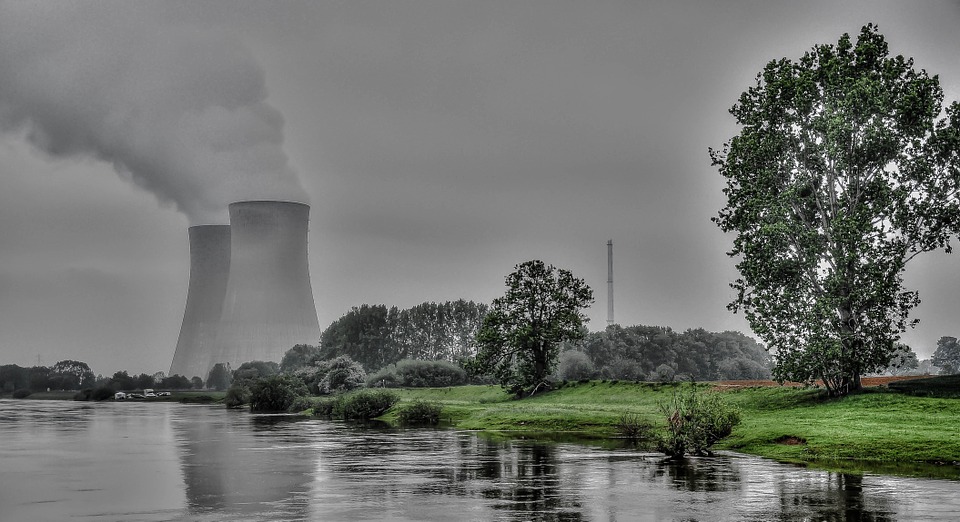
Mention the word nuclear, and the mind begins to imagine atom bombs that wreak death and destruction. Although nuclear technology was first developed for its destructive power, its beneficial aspects far outweigh it. And the primary use of this technology today is in the field of electricity generation.
Currently, 450 functional nuclear power reactors around the world generate 10 percent of the world’s electricity. About 50 more are in the pipeline. Electricity generated by nuclear reactors is on the rise. In 2017, it was 2,503 TWh which rose to 2,563 TWh in 2018
Incidentally, Japan owns the world’s largest nuclear power plant, known as Kashiwazaki-Kariwa plant. It has a net capacity of 7,965 MW ().
How does a nuclear reactor generate electricity?
The turbines that generate electricity require power source to turn them. This power source, in the case of a nuclear reactor, is steam. A physical process called fission, fueled by uranium turns water into steam that spins the turbine to generate electricity.
In a reactor, steam generation is a continuous process, since the condensed water is repeatedly turned into steam by the nuclear reactor core. As compared to coal or gas-fired power sources, a nuclear plant is a reliable, efficient, clean, and carbon-free way of generating electricity.
Key components of a nuclear reactor include fuel, cladding, reflector, control rods, and moderator.
How does a nuclear reactor function?
A nuclear reactor has a core, housed in a steel pressure vessel, that is surrounded by water. It contains hundreds of fuel assemblies comprising thousands of small pellet of ceramic uranium oxide fuel. The heat is generated by a process called fission chain reaction that requires uranium-235. Fission splits atoms to release energy.
To ensure continuous fission reactions, various moderators, such as water or graphite, are used. These slow down the neutrons created by fission and initiate more fissions reactions. The steel pressure vessel ensures that the water around it remains in liquid form even when the temperature rises above 320 degree Celsius. The steam, so produced, is used to drive the turbine to generate electricity.
What’s more, the wastes from the fission process remain in the ceramic fuel and experience radioactive decay, which, in turn, produces more heat. Just to give an idea, it requires a whopping 75 tonnes of enriched uranium to generate 1000 megawatts of electricity !
Types of nuclear reactors
There are two main types of nuclear reactors – pressurized water reactors and boiling water reactors. Let’s see what these are:
#1 Pressurized water reactor
This nuclear reactor is not only used in generating electricity, but also in propelling naval vessels and nuclear submarines. It uses light water as coolant and nuclear moderator. The reactor pumps the water into the core of the reactor under high pressure to stop it from boiling.
The core then heats this water by the process of fission chain reaction. It is pumped into the tubes inside a heat exchanger that heats up a separate source of water into steam. This steam is used to spin the turbine to generate electricity. The water is recycled and can be used again and again. There are 297 pressurized water reactors operating in the world as of 2018
#2 Boiling water reactor
This nuclear reactor, too, uses light water as its coolant and neutron moderator. Although not as popular as pressurized water reactor, this is second most used reactor for nuclear power generation in the world. How this reactor differs from a pressurized water reactor is by way it produces steam. In this, the steam is produced directly in the reactor vessel. However, the process of heating by fission remains the same in the two types of water reactors.
The maximum operating temperature of this reactor is around 285 degree Celsius, and its realistic efficiency in power production is about 33 percent to 34 percent. There are 75 operational boiling water reactors in the world as of 2018
Conclusion
Nuclear technology was first developed in the 1940s and during the Second World War for producing nuclear bombs. It was only in the 1950s that the peaceful use of nuclear fission for power generation was implemented. Despite the reports regarding radioactive water leaking into the sea and accidents in nuclear plants, nuclear power remains the safest way to make electricity.